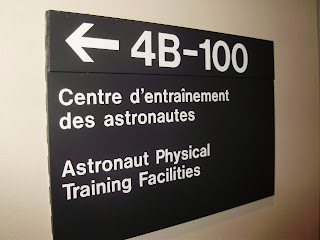I started work (finally!) at the Canadian Space Agency on Thursday. The work itself hasn't settled down enough yet for a potted summary, but a few early observations:
The gorgeous building was designed by Starfleet (aka WZMH Architects), and is ready to to take off the instant we figure out what dilithium crystals are and how they work. In fact, that's my job for the next six months. Unfortunately, I'm neither a doctor nor a geologist, so that joke just isn't going to work.

Security is taken very seriously and seems very effective, but has its... moments. We have these cards that allow us to get through doors (six between the main entrance and my office, three between my office and the nearest toilet). Some of said doors are circular, miniature versions of those you find at better department stores. The catch is that, for security reasons, only one person is allowed in at a time. So, if the next person holds their card up to the sensor a moment too early, the mechanism immediately locks, causing the previous person's face to slam into the glass. One of these contraptions is at the cafeteria entrance, allowing for some excellent people-watching over lunch. [CSA security people: you're doing a wonderful job, and I'm sure these doors are absolutely necessary. Please don't purge me from the system.]
Here's the sweetest thing - my gym:

Better believe I'm motivated!
















